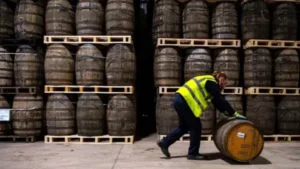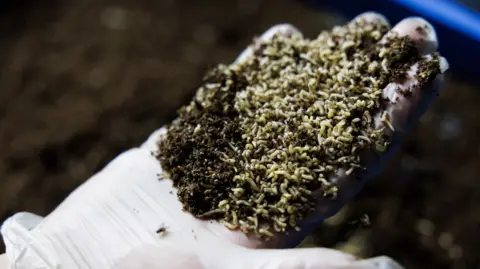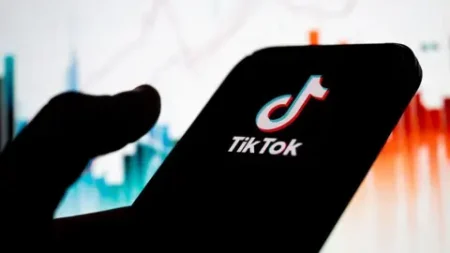The intriguing question of whether we should allow flies to consume our food waste unfolds in the context of an innovative approach toward waste management. Traditionally, many people equate the sight of flies with filth and unwanted decay, often swatting them away from their meals. However, a growing number of municipalities are shifting their perspectives, notably in the Baltic capital of Vilnius, Lithuania. Here, city officials are harnessing the natural behaviors of fly larvae to manage food waste effectively, posing the question: could this model be replicated elsewhere, potentially transforming our relationships with organic waste?
In Vilnius, approximately 607,000 residents collectively produce about 2,700 tonnes of food waste annually. To tackle this challenge, the city’s authorities have enlisted Energesman, a waste management firm that does not charge for these services. Their unique offering means that the city stands to save around €2 million (approximately $2.3 million) each year, especially with plans to handle 12,000 tonnes of waste by 2026. Energesman has provided residents with orange bags for food waste separation to maximize efficiency and even employed influencer marketing strategies to raise awareness. This initiative illustrates a proactive approach by city councils to adapt to mandatory food waste collection policies established last year.
Chef-inspired solutions to food waste management, utilizing fly larvae, offer a compelling narrative of resourcefulness. The CEO of Energesman, Algirdas Blazgys, oversees a process that breeds around six million flies within the company’s facility. Each female fly can lay approximately 500 eggs in her three-week lifespan, resulting in a remarkable turnover of over three million larvae monthly. These tiny creatures demonstrate an impressive capacity for consuming rotting food—a characteristic that positions them as viable candidates for food waste recycling. In fact, a research study illustrated their aptitude by showcasing a group capable of dismantling a 16-inch pizza in just two hours.
The future of this framework is steeped in the potential for innovation. Upon reaching maturity, the larvae can be harvested for various purposes, transforming into protein-rich products suitable for animal feed or even as ingredients in industrial applications such as paints and adhesives. Moreover, the byproduct known as ‘frass’ can be utilized effectively as fertilizer. Despite encountering some hurdles, such as the need for standardization in product coloration, Energesman is engaging with various industries to test their larvae contributions.
While the use of fly larvae for managing organic waste is gaining traction internationally, it’s noteworthy that regulatory frameworks vary widely. In locations like Kenya, for instance, initiatives such as Project Mila leverage fly larvae to address the persistent food waste issues threatening local ecosystems. In Australia, Goterra has been conducting trials using similar methods to manage waste in Sydney. Despite ample case studies demonstrating the efficacy of fly larvae in combating food waste, comprehensive adoption remains limited at the municipal level in many regions.
Nonetheless, with the UK set to mandate weekly food waste collection by March 2026, stakeholders like Larry Kotch—the CEO of the waste management firm Flybox—remain optimistic. Flybox currently services private food producers and supermarkets across the UK and aspires for local councils to adopt similar strategies involving the use of fly larvae in food waste management. However, existing regulations from the Department for Environment, Food & Rural Affairs (DEFRA) currently inhibit councils from processing waste using insects, potentially stalling the progress of what could be an innovative solution to food waste.
If these regulatory barriers can be relaxed, the potential for insect-based waste management is significant. Over 1.3 billion tonnes of food are wasted globally each year, with projections indicating that the introduction of insect bioconversion could upcycle nearly 40% of this waste into valuable resources. This could not only alleviate disposal costs and reduce methane emissions but also produce much-needed protein and organic fertilizers, offering a holistic approach to waste management.
Ultimately, the adaptation of fly larvae for recycling organic waste marks a promising yet nuanced intersection of environmental innovation, regulatory dynamics, and cultural perceptions. While fruitful initiatives are emerging in various countries, the broader adoption of such methods could pave the way for a more sustainable and efficient approach to waste management worldwide, challenging individual and collective mindsets about waste utilization in the process.











